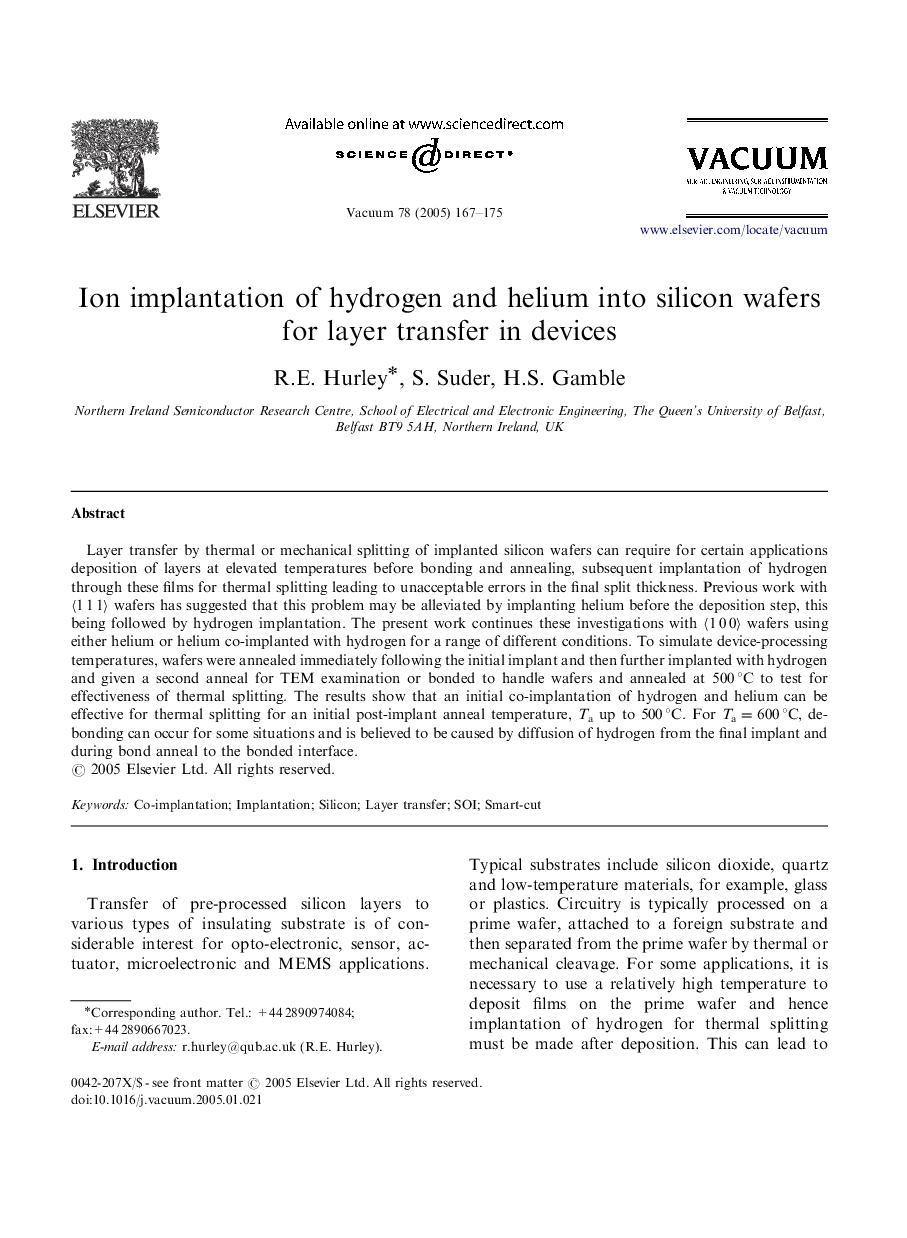| Article ID | Journal | Published Year | Pages | File Type |
|---|---|---|---|---|
| 9821570 | Vacuum | 2005 | 9 Pages |
Abstract
Layer transfer by thermal or mechanical splitting of implanted silicon wafers can require for certain applications deposition of layers at elevated temperatures before bonding and annealing, subsequent implantation of hydrogen through these films for thermal splitting leading to unacceptable errors in the final split thickness. Previous work with ã111ã wafers has suggested that this problem may be alleviated by implanting helium before the deposition step, this being followed by hydrogen implantation. The present work continues these investigations with ã100ã wafers using either helium or helium co-implanted with hydrogen for a range of different conditions. To simulate device-processing temperatures, wafers were annealed immediately following the initial implant and then further implanted with hydrogen and given a second anneal for TEM examination or bonded to handle wafers and annealed at 500 °C to test for effectiveness of thermal splitting. The results show that an initial co-implantation of hydrogen and helium can be effective for thermal splitting for an initial post-implant anneal temperature, Ta up to 500 °C. For Ta=600 °C, de-bonding can occur for some situations and is believed to be caused by diffusion of hydrogen from the final implant and during bond anneal to the bonded interface.
Related Topics
Physical Sciences and Engineering
Materials Science
Surfaces, Coatings and Films
Authors
R.E. Hurley, S. Suder, H.S. Gamble,
